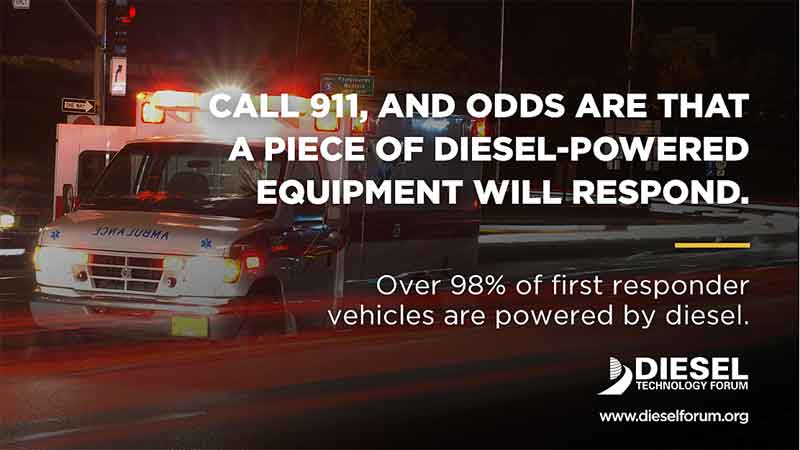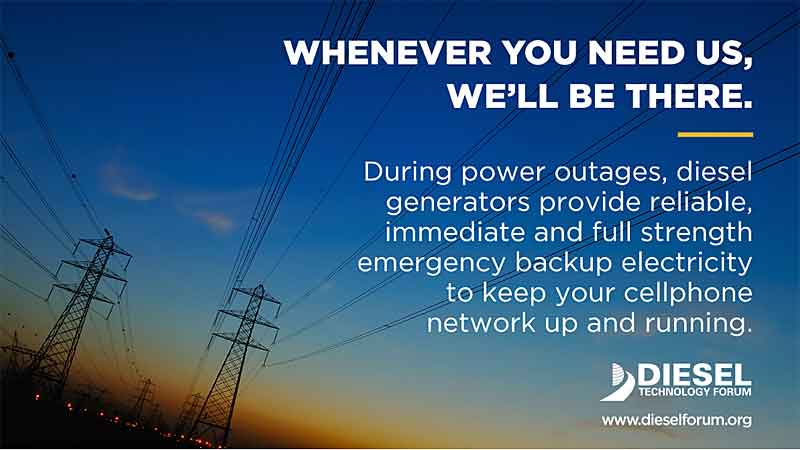
The 2017 hurricane season was particularly brutal. Seventeen storms unfolded between June 1 and November 30, 2017.
Five Category 5 storms made landfall, three Category 4 storms hit within a 26-day period.
Maria was the strongest storm to hit Puerto Rico in 90 years and Harvey dumped 60.58 inches of rain in Texas.
Hurricanes Maria and Irma caused a combined 2,001,000,000 customer-hours of lost electricity service.
(Hurricane Irma Landfall and Aftermath Footage – Naples, FL September 2017. Courtesy of Texas Storm Chasers and YouTube. Posted on Sep 17, 2017)
This week, the National Weather Service observes National Hurricane Preparedness Week, getting ready for the start of the 2018 hurricane season on June 1.

“Preparing for hurricanes and weather-related natural disasters well in advance is a critical first step to a successful recovery as well as minimizing losses from the storm event. Diesel power plays a major role in making sure businesses, governments and private citizens are prepared for and can respond to any emergency,” explained Allen Schaeffer, executive director of the Diesel Technology Forum.
“Diesel generators provide backup, emergency power for everything from national historic landmarks, to iconic baseball stadiums, to local schools, to hospitals, to police stations, to flood protection pump stations, to deep space observatories, to bird sanctuaries, to produce companies, to nuclear power plants, to whole islands.”
“Rescue and recovery efforts after natural disasters reinforce the vital role of diesel power,” continued Schaeffer.
“Most Americans are unaware of the important role diesel technology plays in ensuring vital routine and emergency services 24 hours a day, 365 days a year.

Nowhere is it more critical to have the ultimate performance and reliability than in fire and emergency vehicles, where diesel is the technology of choice.
In the aftermath of a storm, public drinking water and wastewater treatment systems must be functional to protect public health and these typically have diesel generators on back-up.”
In the Outer Banks in South Carolina, two portable diesel generators provided emergency backup power, when the original backup source failed.
During the continued aftermath of Hurricane Maria in Puerto Rico and the Virgin Islands, diesel generators have supported essential services for months, in some cases functioning more reliably than the country’s own power grid.
More than 98 percent of ambulances, fire trucks, mobile command centers and other first-responder vehicles rely on diesel fuel.

And after storms have passed, the giant construction trucks, bulldozers, excavators, loaders and dump trucks that move in to assist with clean-up are also powered by diesel; in the U.S., more than 75 percent of construction equipment is fueled by diesel.
Diesel is also the technology of choice for large commercial trucks and rescue vehicles that will deliver food and vital supplies to help feed, clothe and provide medical supplies to storm ravaged communities; 99 percent of U.S. Class 8 trucks use diesel fuel.
Beyond stand-alone power applications, advanced technology diesel engines and equipment are now being integrated into the newest distributed and sustainable energy systems such as renewable- and battery-driven microgrids.
These new-generation systems give operators the renewable fuel that they want, with the reliability that they need coming from stand-by diesel power.
(A new generation of Tier 4 clean diesel power has emerged, ready to meet the needs of a sustainable future. Courtesy of DieselTechForum and YouTube)
Erin Whitney, researcher at the Alaska Center for Energy and Power, has said oil and renewables together can supply electricity to microgrids; diesel is a source of power generation, while renewables can reduce the load and save fuel.

Take the wind turbine-based microgrid undergoing tests at Join Base Cape Cod; the U.S. military’s first renewable energy microgrid uses a battery to store electricity, and a diesel generator in case everything else fails.
On the island of Kauai, Hawaii during sunny days, the island’s utility generates 97 percent of its power from solar, biomass and hydropower.
Since March 2017, Tesla battery packs have been able to store enough energy to keep the grid going for up to four hours after sunset.

The rest of the time, the island’s diesel-fired power plants kick in.
And Nantucket, Massachusetts is another prime example; there, the island’s prime power is backed up by a combination of diesel generators and battery packs.
Here are some practical tips to follow to protect against power outages to prepare for this year’s hurricane season:
- Build an emergency kit and communications plan, following FEMA’s guidelines.
- Assess your needs for a backup generator – follow our checklist here.
- Check out these tips from disaster prep expert and meteorologist Cheryl Nelson.
(ESPN and the Ad Council reminds viewers about an easy way to be a hero: preparing for a disaster. Courtesy of FEMA and YouTube)
Fast Facts about Diesel Generators
Many diesel generators are built to withstand temperatures below 0°F and built to withstand winds up to 180 miles per hour.
Diesel generators are able to achieve full load-carrying capacity within 10 seconds of grid power outage.
Diesel generators come in various mobile sizes and configurations and come with their own standalone fuel supply – important when other sources of power are disabled by utilities in an emergency situation.

















